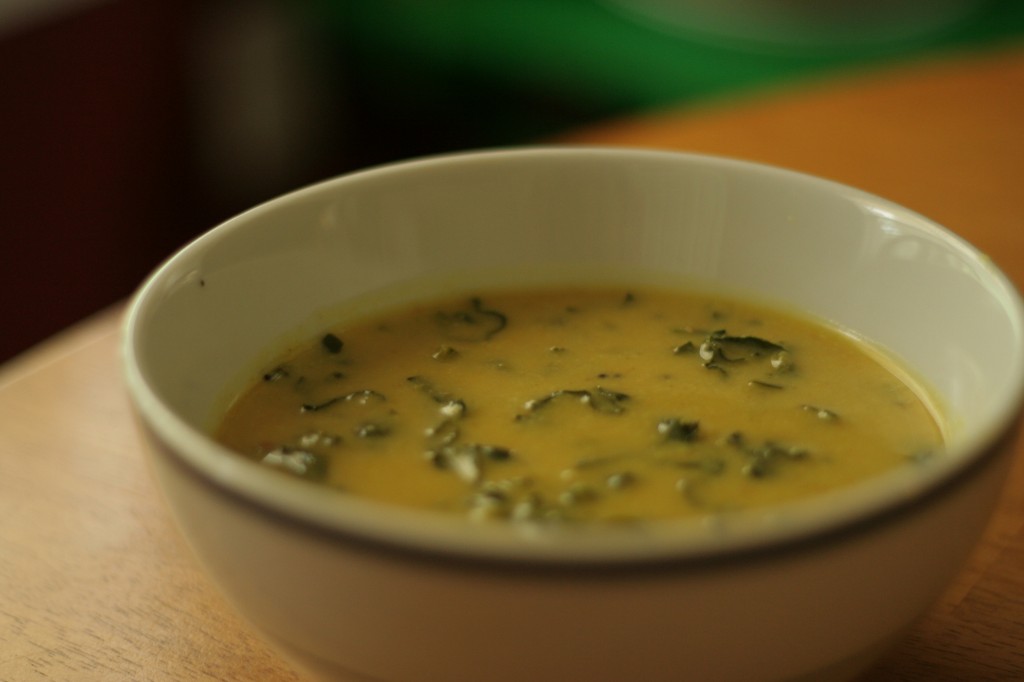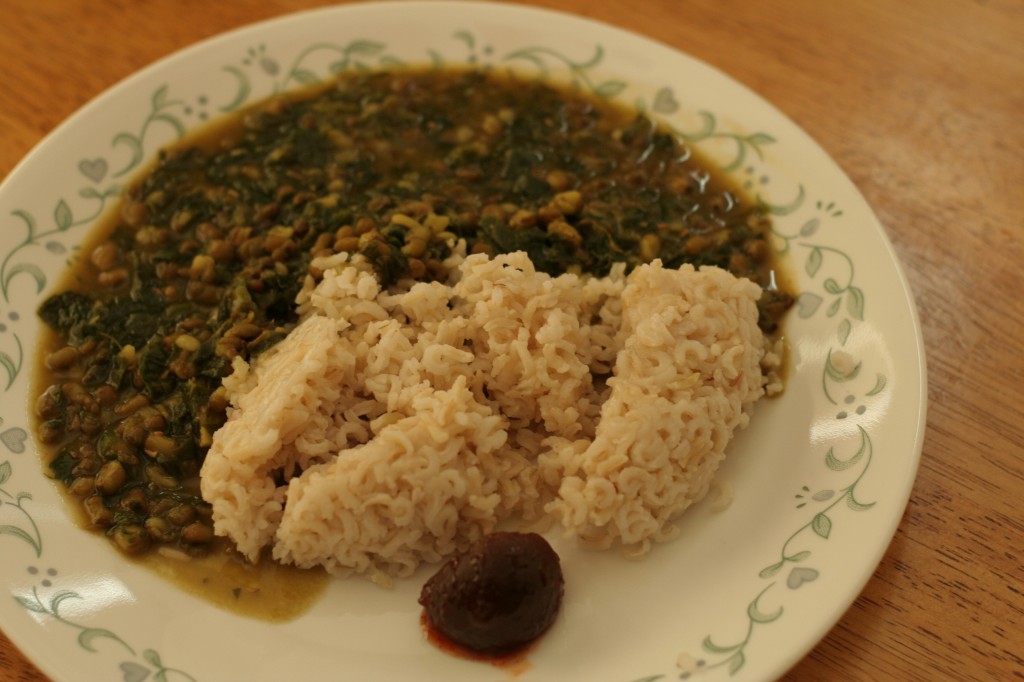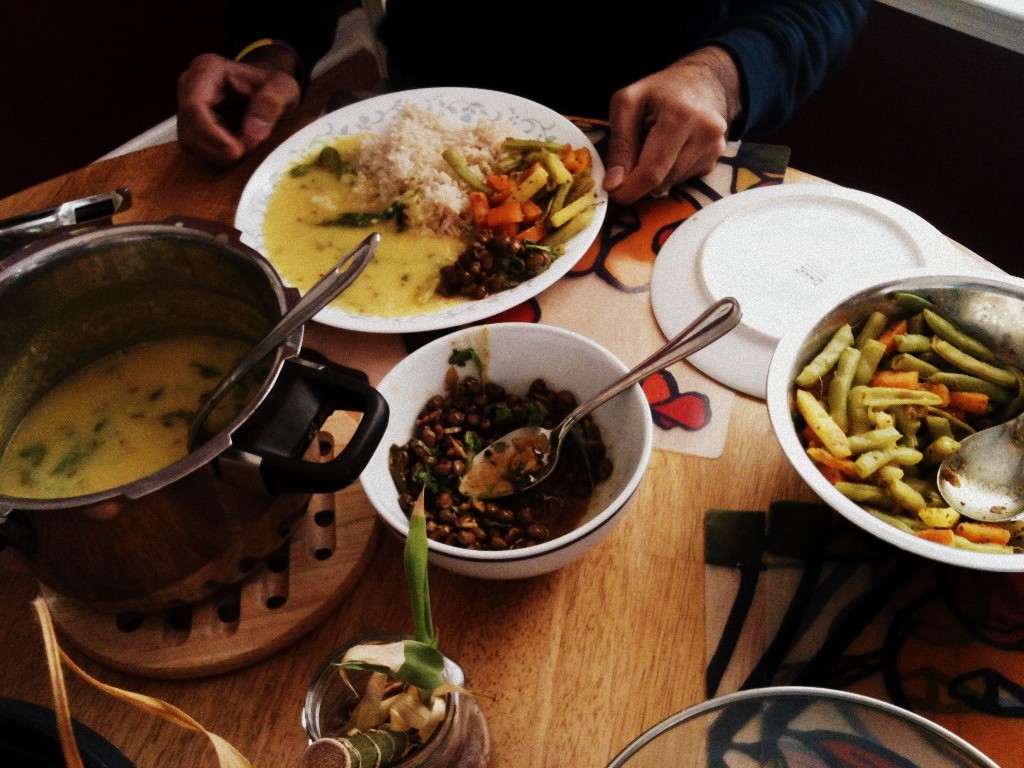Rituals make our food more flavorful (NY Times)
Rituals make our life flavorful. They add detail to our mundane existence, making it extra-special. Food and the act of eating benefit greatly from little rituals. In traditional Indian homes, these rituals can run into long minutes (even hours!). They have their own significance and they add sacredness to an act that we undertake three times a day, every day of our life (yes, I realize that I am immeasurably blessed to be able to state that fact so blandly).
At my home, my parents were fairly casual about these rituals, so I didn’t grow up with many of them. However, I have incorporated a few into my daily meal routine. For instance, I chant the following verses before I begin a meal.
brahmArpaNaM brahma haviH brahmAgnau brahmaNA hutam ।
brahmaiva tena gantavyaM brahmakarmasamAdhinA ।।
(The act of offering is Brahman. The offering itself is Brahman. The offering is done by Brahman in the sacred fire that is Brahman. He alone attains Brahman who, in all actions, is fully absorbed in Brahman.)
annadAta pAkakartA taThA bHoktA sukhI bhava, sukhI bhava, sukhi bhava|
(The giver of food, the cook and the one who consumes it… may you be happy, may you be happy, may you be happy!)
Meal combinations don’t exactly constitute rituals, I know, but they gave a certain predictability to our kiddie days. Most often, Sunday lunches used to feature steaming white rice, tangy tomato rasam spiced with tamarind, fresh green cilantro, cumin and mustard seeds and sweetened with jaggery, leafy amaranth dal ground with coconut and cumin, a vegetable dish of green beans and suran (Elephant Food yam in English – who knew!).
I don’t have access to amaranth leaves, so I used Mummy’s recipe to recreate the dish using kale instead. Here is my take on a leafy dal and coconut concoction that made my childhood Sundays perfect in every way possible.
Ingredients
4-5 stalks of dark green lacinato kale, chopped
1/2 cup toor dal
1/2 cup coconut (fresh or frozen)
1/2 teaspoon turmeric
2 1/2 teaspoons cumin seeds
1 green chilli
1/2 teaspoon mustard seeds
1/2 teaspoon urad dal
1-2 dried red chillies
1 teaspoon oil (for tadka)
Method
- Cook toor dal in the pressure cooker for two whistles until soft. Turn off the heat
- Blend the coconut and cumin seeds into a smooth paste, adding adequate water to gain the right consistency.
- Open the pressure cooker lid, drop in the chopped greens, turmeric and green chilli. Add a cup or so of water, turn the heat on and let the mixture cook. Stir intermittently. You can keep the cooker covered so as to hasten the cooking time.
- Add salt to taste.
- When the kale is cooked (tear off a little piece and check the taste and color), turn off the heat.
- Add the coconut-cumin paste. Mix well.
- Warm the oil for tadka. Add mustard seeds. As they begin spluttering, add red chillies and urad dal. As soon as the urad dal turns brown-red in color, turn off the heat. Add the mix to the kale-coconut dal. Stir well.

Kale-Coconut Dal
Notes
This is a simple yet hearty dal that ranks high on taste, nutrition and flavor. If your palate appreciates heat, go ahead and increase the number of red chillies in the preparation.
Fresher the kale, better it will be in terms of taste and texture. I have noticed that kale turns drier and tougher as it sits.
My preferred way of cooking dals, beans and legumes is in a pressure cooker. I add boiling water to the washed dal (2:1 proportion of water to dal), shut the pressure cooker with its lid, turn on the heat. As the steam begins to rise out of the top, I cap the whistle on. When the first whistle blows, I reduce the heat. Then I wait for another whistle. Right after the second whistle, I turn off the heat. In case of beans or legumes that are harder, I might wait for additional 2-3 whistles. This method is followed by my mother as well. I have seen that it results in soft and well-cooked dals.
Serve a bowl of this dal with steaming brown (or white rice), a smidgen of ginger pickle on the side and tuck in.


